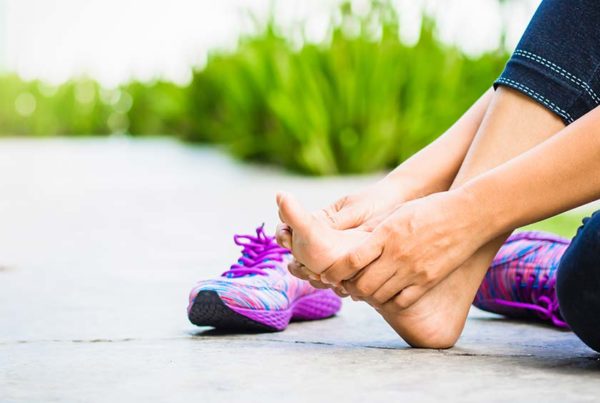Pilots are endurance athletes of the sky. That was clearly evident in the age of Charles Lindbergh and Amelia Earhart. And it continues to be true today for the men and women who guard our skies as part of the U.S. military. B-2 pilots, for example, often fly up to two consecutive days during long-range missions. One of these pilots, and a former decathlete, Major Jason Marshall, recognized that one battle was being lost—the fight against fatigue. — Dr. Phil
In October 2001, the 509th Bomb Wing at Whiteman Air Force Base in Missouri set a new record for combat-sortie duration in the war on terrorism. Six B-2s led the first few days of Operation Enduring Freedom by destroying some of the most critical targets and clearing the way for other critical combat assets to successfully engage air strikes virtually unchallenged over Afghanistan. One of those B-2 sorties was just over forty-four hours, which made it the longest combat sortie in the history of aviation.
Whiteman’s training program and operational innovativeness began reaching out to world-renowned experts in the area of human performance for help. Two B-2 pilots in the tiny cockpit were experiencing micro-naps after twenty-four hours of being awake at the stick. As you can imagine, operating under conditions of extreme exhaustion and going to sleep while flying a $2.2 billion national asset was clearly a problem.
I was the B-2 pilot in charge of flight safety at the time and was determined to figure out how to enable two B-2 pilots to operate effectively for up to fifty hours while airborne. I personally contacted Dr. Phil Maffetone because I had heard of him for years as the “father of sports nutrition” while I competed as a decathlete at the collegiate, amateur, and professional level. When I made Phil aware of the situation B-2 pilots were up against, he cancelled several plans; and although we were ready to fund his expenses to come to Whiteman AFB, he refused and came on his own dime to help. We spent several days immersing him in our environment and constraints.
Phil educated us on the importance of sleep the night prior and helped us to develop a strategy to take turns flying the jet and manage pilot sleep cycles based on our circadian rhythm so we would get the biggest bang for the buck while resting. We scheduled our aerial refueling times around the custom sleep schedules since both aircrews had to be in the seat to get gas while airborne. We were able to get some sleep with this plan, but it was still not enough to reduce fatigue levels below the equivalent of being legally drunk. So more had to be done.
Another problem was that the B-2 didn’t have a place to sleep, so we figured out a way to modify a military cot to fit behind the two ejection seats. But altering the cockpit to add a bunk would have cost millions and there just wasn’t room. The air vents that control the cockpit and keep all of the equipment cool blow a lot of loud, high pressure, very dry air, thus leaving the pilots to operate in an environment similar to the top of Pike’s Peak—cool and dry with the oxygen equivalent of being at 15,000 feet. Getting the cot and resting position away from the air ducts was another key to giving our pilots the best opportunity to sleep when the opportunity arose.
Phil highlighted the rapid dehydration issues that were occurring as a result of the cockpit high interior altitude and windy, dry environment. The B-2 was originally designed for a specific Cold War nuclear mission so the toilet was only intended to sustain two pilots for a maximum ten-hour flight. Forty plus hours of drinking the amount of water we needed was another issue we had to work through. Some pilots used “piddle packs.”
If the cramped quarters and blowing air weren’t enough to make sleep a distant dream, there was the cockpit noise. Phil realized that the noise levels were comparable to, and often greater than, a rock concert. It didn’t take him long to convince us that we needed to address this issue. We volunteered our pilots to test the new Bose noise reduction headsets and ear-cup inserts for helmets.
Phil also suggested adding miscellaneous items like full-spectrum light bulbs in the cockpit and posture-perfect seat cushions and lumbar support and more.
Despite all these improvements, we were still not in a position to declare victory. Which brought us to the biggest surprise of all—the effects of nutrition. Phil gave a stunning presentation on the effects of food on performance and how a lifestyle of healthy eating was required to achieve maximum benefit. He pointed out how even just a single meal could have a very significant effect on human and cognitive performance for the next four to six hours. It was frankly embarrassing to most of us when he highlighted that our flight kitchen was restricted to spending less than a few dollars on each aircrew meal to fuel the body of those responsible for flying these billion-dollar machines.
We called our aircrew meals “box nasties” because they came in a thin white cardboard box that was probably more nutritious than the food inside. Since everything in the box was mostly simple-sugar type carbohydrates, pilots were experiencing huge insulin spikes. When a large insulin spike was combined with a lull in the pilot’s circadian rhythm, cognitive performance and response times would decrease dramatically. Many of the pilots experienced these so-called afternoon food comas after having a heavy carbohydrate lunch. We tested this in our fifty-hour B-2 simulator missions by feeding one crew whatever they wanted to eat and feeding the other crew meals designed in accordance with the principles Dr. Maffetone taught us. The results were like night and day.
Fortunately, with a little education, the flight kitchen staff worked with us to put together food that would help aircrew to maintain energy levels and not require as much sleep.
The best personal testimony I heard was from our group commander who flew a long mission of over thirty hours. He thought all the nutrition stuff made sense but admitted he didn’t expect to experience anywhere near the level of performance increase he later described. He delivered his testimony in a large scheduling meeting with several other commanders. He said he hadn’t felt that alert in years and went the entire mission without sleep because he didn’t feel like he needed any. He recommended the other commanders get their pilots educated on how to eat like this.
Based on our improved performance at Whiteman AFB due to healthy eating—following meal plans approved by Phil—we soon had people calling us from hundreds of military locations wanting more information on how to engineer these meals.








